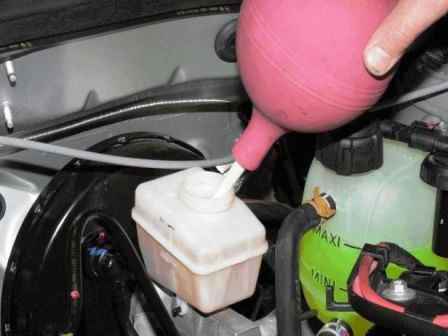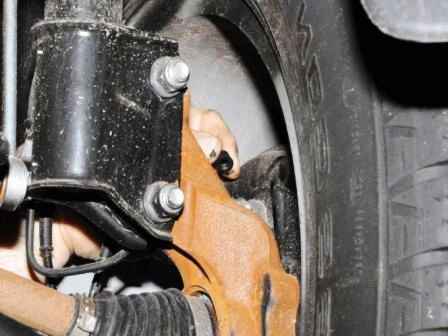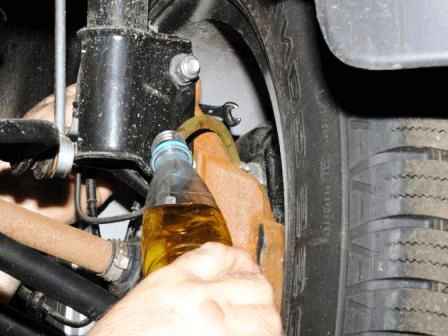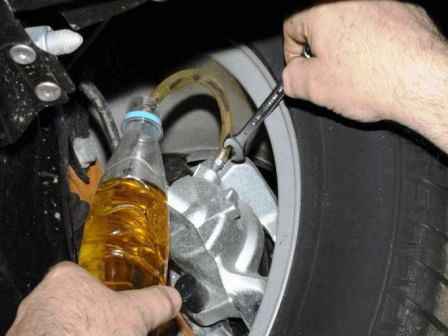We replace the fluid in the hydraulic brake and clutch drives every 90 thousand kilometers or after three years.
We install the car on a viewing ditch or a lift.
We pump out the old fluid from the reservoir with a rubber bulb or syringe and fill the reservoir with new working fluid.

We bleed the brake and clutch hydraulic drives until the new fluid (lighter than the old one) starts to come out of the bleed valves of all working cylinders.
After bleeding the brake and clutch hydraulic drives, we bring the fluid level in the reservoir to normal.
Bleeding the brakes
We remove air from the system with the engine off, first from one circuit, and then from another in the following sequence:
- - brake mechanism of the right rear wheel;
- - brake mechanism of the left front wheel;
- - brake mechanism of the left rear wheel;
- - the brake mechanism of the right front wheel.
If air gets into one of the circuits, it is enough to bleed only this circuit, and not the entire hydraulic drive.
Before pumping, we check the level of the working fluid in the reservoir of hydraulic brake and clutch drives and, if necessary, add fluid.

We clean the brake bleeder of the right rear wheel from dirt and remove the protective cap from it (shown on a 4x4 car).
Loosen the bleeder valve with a ring wrench or a head of 8.
We put a hose on the fitting, and immerse its free end in a container partially filled with working fluid.
The assistant should vigorously press the brake pedal to the stop 4-5 times and keep it pressed.

Using an 8 key, we unscrew the bleed valve by ½ - ¾ turn.
In this case, fluid with air bubbles will flow out of the hose, and the brake pedal will move forward.
As soon as the liquid stops flowing out of the hose (while the pedal should reach the stop), we wrap the fitting, and only after that the assistant can release the pedal.
Repeat pumping until there are no air bubbles coming out of the hose.
Remove the hose, wipe the bleeder dry and put a protective cap on it.

We bleed the brake mechanism of the left front wheel as described above, unscrewing the bleed valve with a key by 9.
In the same way, we pump the brake mechanisms of another circuit.
When pumping, you need to monitor the fluid level in the tank and add fluid if necessary.
If, when you press the brake pedal, we feel its “softness” and increased travel, it means that there is air in the system.
In this case, repeat pumping until the pedal becomes "hard" and when pressed, go no more than half the distance to the floor.
If the air cannot be removed, we check the tightness of the connections, pipelines, hoses, main and working cylinders.
Bleeding the hydraulic clutch is described in the article - Renault Duster clutch features.





